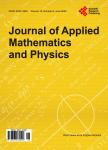Minimum Energy Requirement for Inducing Withdrawal Reflex in Millimeter Wave Exposures
Minimum Energy Requirement for Inducing Withdrawal Reflex in Millimeter Wave Exposures作者机构:Department of Applied Mathematics University of California Santa Cruz CA USA US Department of Defense Joint Intermediate Force Capabilities Office Quantico VA USA Department of Applied Mathematics Naval Postgraduate School Monterey CA USA
出 版 物:《Journal of Applied Mathematics and Physics》 (应用数学与应用物理(英文))
年 卷 期:2022年第10卷第7期
页 面:2381-2406页
主 题:Thermal Effect of Millimeter Wave in Skin Activation of Thermal Nociceptors Non-Dimensionalization Analysis Optimization
摘 要:We consider the problem of inducing withdrawal reflex on a test subject via exposure to a millimeter wave beam. In our physical model, there are 10 physical parameters affecting the occurrence of withdrawal reflex. Our goal is to pinpoint the roles of these physical parameters in inducing withdrawal reflex. We first carry out non-dimensionalization to reduce the model to a non-dimensional system of only 3 composite parameters: non-dimensional beam power density, non-dimensional beam radius, and non-dimensional exposure time. If the beam power is kept on and steady, withdrawal reflex occurs eventually;the shortest exposure time for inducing withdrawal reflex corresponds to the smallest energy consumption at the given power density and beam radius. In the 2D space of power density and beam radius, the overall minimum energy occurs at the corner of very large power density and very small beam radius, which also produces a very large value of maximum skin temperature and a long time to withdrawal reflex. To reduce the burn injury risk, we introduce a cap on the maximum skin temperature. At each given total beam power, we carry out optimizations with respect to the beam radius, constrained by the prescribed temperature cap. The energy consumption varies negatively with the prescribed temperature cap: a lower temperature cap can be accommodated only with a higher energy consumption via the venue of a larger beam radius. The energy consumption is relatively flat with respect to the total beam power and attains a minimum at a moderately large total beam power. The time to withdrawal reflex is approximately inversely proportional to the total beam power. Our analysis demonstrates that a moderately large total beam power is a good compromise to achieve both low energy consumption and short time to withdrawal reflex.



